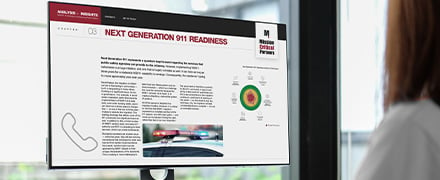Missed Opportunities: Improving EMS Billing
Posted on October 16, 2020 by Jose Marti
As we have previously discussed, emergency medical services (EMS) agencies are undergoing a seismic shift in the way they operate. While many of these changes can be directly attributed to the current landscape resulting from the COVID-19 pandemic, some challenges facing agencies today are not new. One such challenge concerns the billing and reimbursement process.
MISSED OPPORTUNITIES
A trip to an urgent care facility, an emergency department, or even a primary care provider typically leads to the interrogation of patients by admissions staff members prior to being provided service. Although patients requiring urgent medical intervention in life-threatening circumstances usually are treated immediately upon arrival, questions regarding insurance and payment are directed to family members as soon as possible. In both scenarios, the result is ultimately a series of bills to collect payment for services rendered. The bottom line, literally, is that most medical providers understand the importance of billing and payment recovery, which enable them to maintain service delivery models and pay for overhead costs like rent and staff salaries.
Unlike other medical providers, EMS agencies continue to struggle when it comes to billing and collecting payment for medical care and transport, even though these funds are equally crucial to supporting ongoing operations. In fact, EMS is the only healthcare provided to patients in the United States without requisite proof of insurance or payment recovery confirmation.
So, what makes EMS different from other medical providers and why is payment recovery such a challenge?
Billing and payment delays: Ambulances are equipped to provide patient care, but not to complete forms and conduct other administrative tasks. In an emergency-transport scenario, it is often impossible to capture the information necessary to submit a claim to a patient’s insurance, including Medicare and Medicaid. Even non-emergency transports can cause delays in processing claims for billing and payment because they may take place outside of an insurance company’s normal operating hours.
When it comes to payment, EMS agencies are dealing with several payers, including commercial insurance, Medicare and Medicaid, facility payers—e.g., nursing and rehabilitation centers—and even the patients themselves. While standards exist for payment timeframes, billing and processing delays ultimately result in payment delays, as well.
Commercial insurance hurdles: Today’s commercial insurance landscape is packed with high-deductible plans. For patients, this means a higher threshold needs to be met before insurance will take over payment for services. When a claim is submitted by EMS to insurance for a patient who has not yet met his or her deductible, the claim is subsequently denied, and the agency will be required to resubmit the claim for payment using another method.
In addition, back and forth negotiations with insurance companies for patients who have met deductibles regarding payment for services can further prolong the payment timeline.
Self-pay customers: Uninsured patients, patients who have not yet met their insurance deductibles, and those who prefer to pay for care and transport costs out of pocket also pose a challenge for EMS agencies when it comes to payment collection. Typically, paper bills are sent to patients to request payment. However, these are some of the easiest items for patients to misplace or ignore, ultimately delaying payment.
EMS agencies that use an online patient portal and electronic communications in addition to, or even in lieu of, traditional payment collection methods also may have issues collecting payments. Outdated, difficult to navigate patient portals can frustrate those patients who prefer to use these methods for payment, resulting in bills remaining unpaid for longer periods of time.
CONSIDERATIONS FOR IMPROVEMENT
To overcome the hurdles that billing and payment collection present, EMS agencies should consider the following:
- Reviewing and revising their current billing processes and establishing new protocols to help expedite invoice delivery and, ultimately, reimbursement
- Identifying the limits of current billing technology and working with their vendor(s) to upgrade software
- Improving web-based patient portals to make them more user friendly
- Lobbying for updates to existing legislation and/or creation of new legislation that addresses the cost of EMS readiness and service delivery
Financial health plays a critical role in an agency’s ability to provide medical care to the community. Ultimately, the development and/or revision of EMS billing processes and technologies should be an essential part of an agency’s strategic plan.
While payment collection and reimbursement for services rendered always has been a challenge for EMS agencies, that does not make the process any less critical. These funds are used to support the agency’s ongoing operations, enabling them to continue to provide care within their communities.
Mission Critical Partners (MCP) understands the unique challenges that today’s EMS agencies face and offers innovative ideas to help streamline operations, including the billing and payment processes. To learn more about the services we offer, contact us today.







